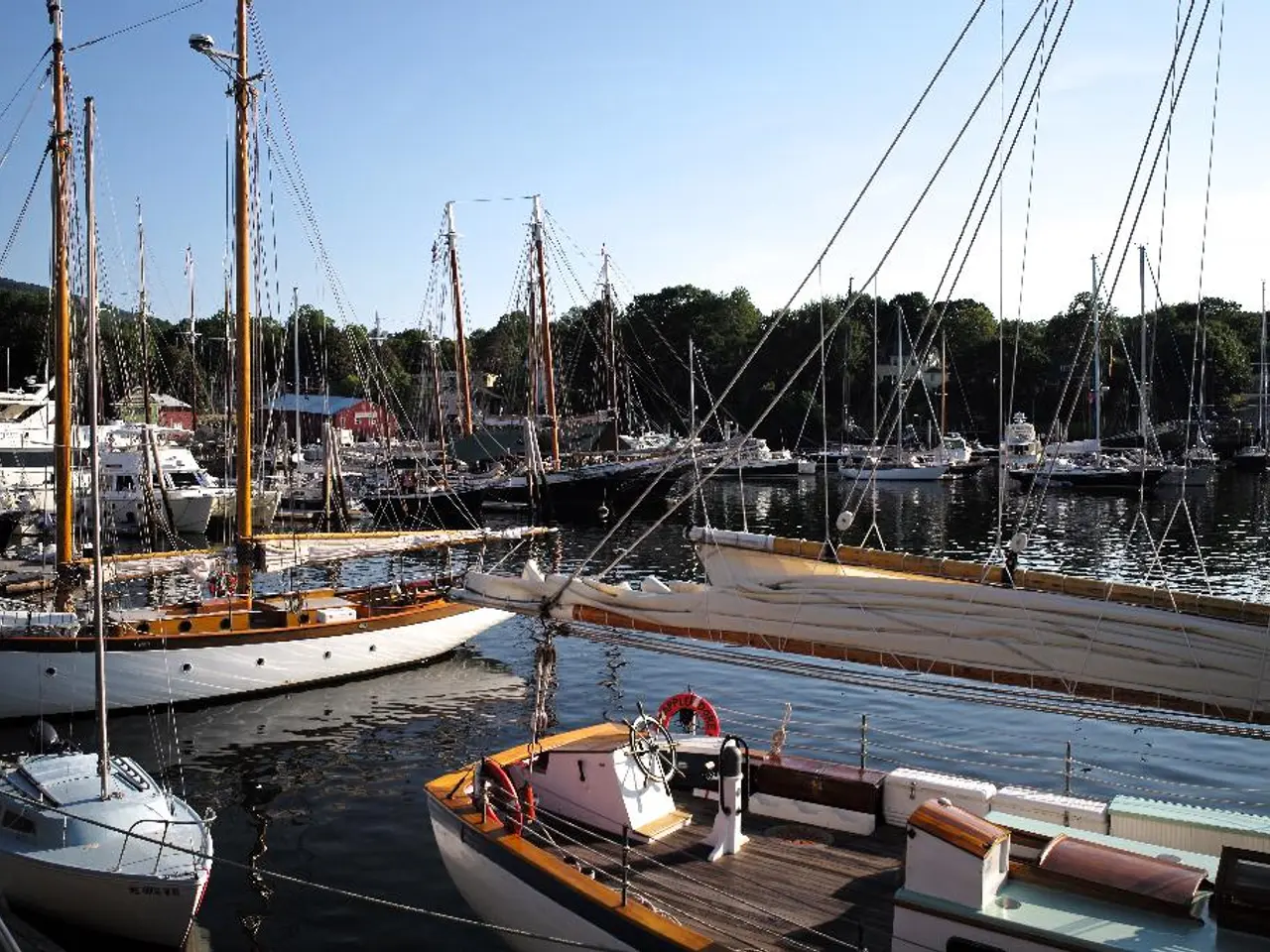Unfavorable Numbers Surface for the North Baltic Canal Project
The Nord-Ostsee-Kanal (NOK), also known as the Kiel Canal, has experienced a decade-long decline in ship passages, with the number of vessels dropping below 25,000 in 2022 for the first time since 1945. This decline has been attributed to several factors, including changes in global shipping routes, size limitations, economic and political influences, and competition from other ports and infrastructure.
### Reasons for the Decrease
The growth of larger ships exceeding the NOK's size limits, shifts in global trade patterns favouring alternative passages like the Suez Canal and Panama Canal, and competition from other Baltic Sea ports and infrastructure improvements have contributed to the decline in traffic. Economic slowdowns or shifts in trade partnerships, as well as geopolitical issues, have also played a role.
### Impact on the German Economy
The decrease in ship passages has significant implications for the German economy. Reduced revenue from canal fees, which are essential for the operators and the local economy, is one such impact. The canal's decline also affects regional economies, with a decrease in demand for shipping, logistics, and ship maintenance services leading to job losses and reduced economic activity.
Increased reliance on longer sea routes for some goods might also lead to higher transportation costs and delivery times, impacting logistics and supply chains. The decline in traffic reflects broader changes in maritime trade that Germany must adapt to, including infrastructure modernization and diversification of transport strategies to remain competitive.
### Current Developments and Future Prospects
Construction work on the NOK is ongoing, aimed at protecting the eroded slopes along the canal. A three-month closure of a lock chamber in Brunsbüttel is threatened from May 2023, due to the need to renew rails for the gate undercarriages of a sliding gate.
The presentation of the annual balance for the NOK by the General Directorate of Waterways and Shipping (GDWS) is expected in late February 2023, which will provide a comprehensive analysis of the traffic statistics for the canal.
Jens-Broder Knudsen, chairman of the Initiative Kiel Canal, reported a decrease of up to ten percent in ship passages. However, David-Christopher Müller, second elder of the NOKII pilotage association from Kiel, has not seen signs of a trend reversal.
The expansion of the NOK, if completed, would potentially lift the speed limit on the canal, making it more attractive to shipowners, according to Jens-Broder Knudsen. However, since July 1, 2023, a speed reduction from 15 to 12 km/h has been in effect on the NOK for all ships due to construction work.
The traffic data for the canal, including the quantities of goods transported and the size of the ships, is awaited with anticipation. The middle ship size on the NOK is decreasing, affecting the pilotage fees for the canal pilots. Shipbrokers Sartori & Berger and UCA United Canal Agency also reported a decrease in ship passages.
In conclusion, the decline in ship passages through the Nord-Ostsee-Kanal is a complex issue, influenced by various factors. Adaptation in Germany’s maritime infrastructure and economic planning will be crucial to mitigate the impacts and maintain the canal's importance as a key transportation route.
Sports events could provide an alternative source of revenue for the operators and local economy during the decline in traffic. Organization of marathons, triathlons, or cycling races along the canal could attract tourists and generate revenue.
The decline in ship passages may have a ripple effect on various businesses related to sports, such as athletic equipment suppliers and event organizers, as the reduced economic activity might lead to diminished sponsorship opportunities.





